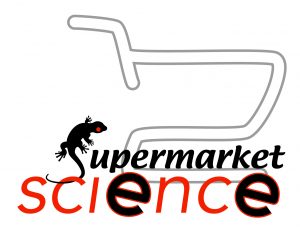 In brief, Supermarket Science is a collection of books designed to teach science, arts, and math in a fun and practical way to elementary school children. It draws on local resources, involves parents, and closely ties materials to Common Core Standards. There are sections written for educators — teachers and parents — and those aimed directly at students. These materials are fun and easy to use. All activities have been tested in real classrooms over a period of 6 years. Anecdotally, we learned that in California the 5th-grade science STAR scores were greatly improved after students went through the Supermarket Science program.
In brief, Supermarket Science is a collection of books designed to teach science, arts, and math in a fun and practical way to elementary school children. It draws on local resources, involves parents, and closely ties materials to Common Core Standards. There are sections written for educators — teachers and parents — and those aimed directly at students. These materials are fun and easy to use. All activities have been tested in real classrooms over a period of 6 years. Anecdotally, we learned that in California the 5th-grade science STAR scores were greatly improved after students went through the Supermarket Science program.
Supermarket Science materials don’t only include the activities and books but teach a general framework that the whole family (and school) can adapt to teaching. Even when only the older kids participate, the younger children — the “Science Buddies” — get the benefits of science show-and-tells and organized science performances that involve the whole family and improve learning comprehension and enjoyment.
My students were completely involved in the various activities we did. The math and science of it had “real” meaning to them!
— Jeannetta L. Mitchell, 6th grade math and science teacher
Supermarket Science materials are designed to be wide and deep — teachers, parents, and students are able to dive deeper into the content at any level. And teachers, parents, and students can choose what to cover and learn. Some kids are more interested in astronomy, some in ocean sciences, and others in dinosaurs. We wanted to create materials that gave the greatest freedom to the teachers and learners.
There are five types of sets of materials: TEACH, SHOW, LEARN, USE, and DO:
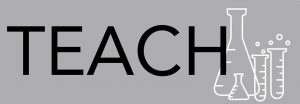



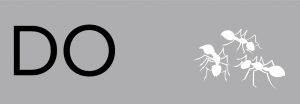
TEACH pages explain to parents and teachers the goals for each project, how they align with the Core Curriculum Standards, and what materials students will need to be able to do them. It’s hard to teach when the purpose of the lesson is unknown or obscure. So we believe that to make families important participants in their children’s education, we have to provide the background necessary to use the worksheets.
SHOW pages are exactly what they sound like — they visually illustrate some of the necessary components of the instructional materials. We strongly encourage students and parents to do Internet searches to expand the scope, but they don’t need to do that to complete the materials. Not everyone will have free and unlimited access to the Internet at all times. Below is an example of a SHOW page and it’s paired USE page.

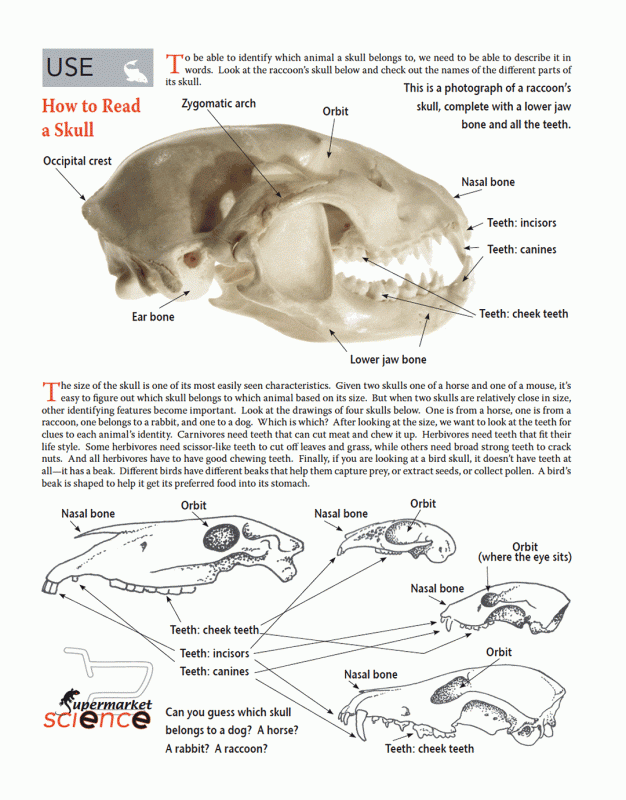
The same USE and SHOW pages can be used to support different activities. Understanding parts of the skull can be used to identify an animal in an owl pellet OR learn about adaptations of various animals to their environment. By mixing and matching various pages, kids could absorb different content and learn a variety of subject areas.
LEARN and DO pages provide learners with context and give explicit instruction on how to complete each particular activity. There are also suggestions on how to expand and other fun projects at the end of each set of materials.
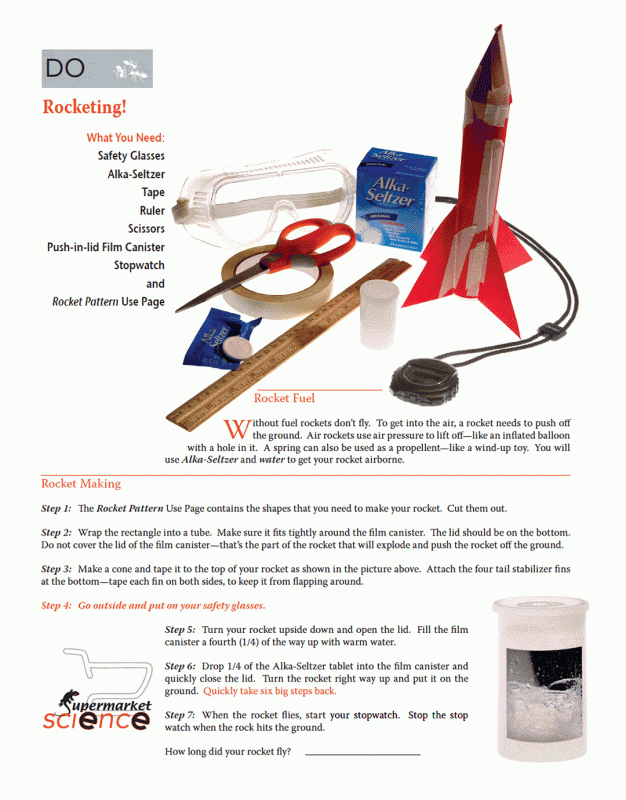
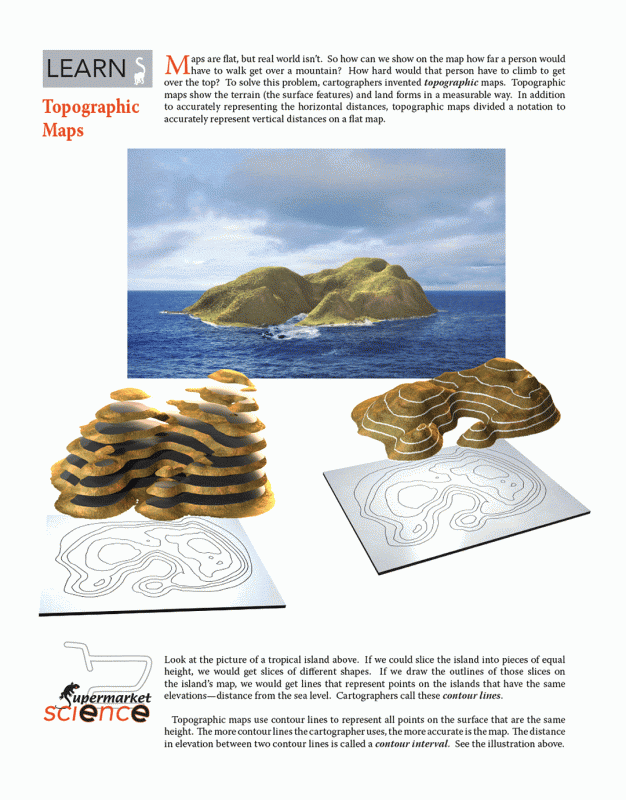
Existing Modules
These are Supermarket Science Activities that have been developed and tested in San Francisco elementary and secondary classrooms to date. Download what you want or need. We will continuously update with more materials as we get them ready to put up online. Please send us back photos and stories of your accomplishments! We would love to share them with the world.
Animals
There are over 100 animals listed in this short reference guide. These animals were chosen to show the diversity of animals on Earth: carnivores versus herbivores; Australian animals versus animals found on the American continent; marine animals versus animals living on land; etc. This diversity is used in the animal card games and activities presented in this book. Kids are encouraged to lookup more information and links to sources and zoos and videos are provided to jump-start those investigations. But this is a good start — download the PDF of the book, use it directly on your computer or print out just the pages that are of interest or needed to do a particular set of materials.
Archeology
Treasures of the Past activity links hands-on exploration of human artifacts with creative story writing. These activities were designed to merge the sixth-grade social studies curriculum with language arts but could be used by kids of almost any age. Does your child like to tell stories? Perfect — allow them to learn about history while writing a fictional account of a “discovered” artifact! Does your kid like to draw? Great! Document the archeological discoveries using artistic skills. There doesn’t have to be one way to learn something. The opportunity that lies in having to learn things at home is that suddenly there are options for each kid to learn in a way that suits them best.
Astronomy
Astronomy is the science of the stars. This book provides a broad range of activities for students from kindergarten (The Human Solar System) to fifth grade (Optics Wars). Students learn interesting facts about the physical world and use explore ideas through games and experiments as well as group and individual activities that transform facts into practical knowledge, deepening understanding of difficult concepts.
Botany
Fruits, flowers, stems, and roots — what do we eat? And what do plants eat? This book has a large collection of activities that uses the produce section of the supermarket as well as schoolyard to explore the nature of plans all around us. Kids make experiments, and then they eat them! Some of them.

Dissections
Owl Pellet Dissection and Squid Dissection come with the following accompanying activities and parent-teacher guides and student charts:
We are not what we eat!
- Looking for clues or a story of owls and pellets
- Owl’s dinner
- How to read a skull
- Whose skull is it anyway?
- Great horned owl food chain
- Barn owl food chain
- Owl food web
- The hunt
- The backyard circle of life
- Squid Dissection
- Squid words
- Squid poetry
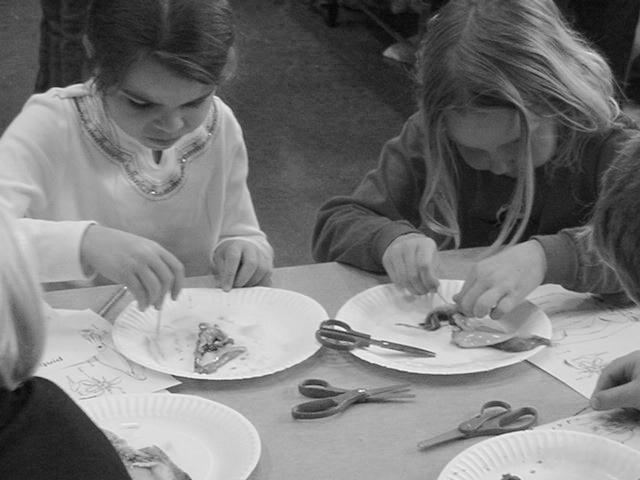
Earth Science
What is soil made off? What’s continental drift? How does the water cycle work? These topics are covered over and over again in Kindergarten through high school, at increasingly more and more sophisticated levels. We have a bunch of materials that allows kids and their families to explore the earth sciences together and in a variety of ways. For example, we have everything from art to writing stories — science is not just a recitation of random facts. Taught right, it gives people life-long tools to comprehend information in a variety of fields that become necessary in our daily lives. For example, to all those who complained about learning about exponential curves, aren’t you happy now?
Electromagnetic Specrum & Optics
Explained well, you would be surprised what kids can understand at a very young age. Bees see the world in a very different light than humans. To them, each flower that looks rather plane to us is marked as well as an airport landing field! These materials help families explore the science of light together. There lots of projects for different ages. But if your child is “into this” topic, go for it! See how far you get. And at any point, you can sidestep into another set of related activities. Sciences are interconnected, so learning should be too.
Patterns in Nature
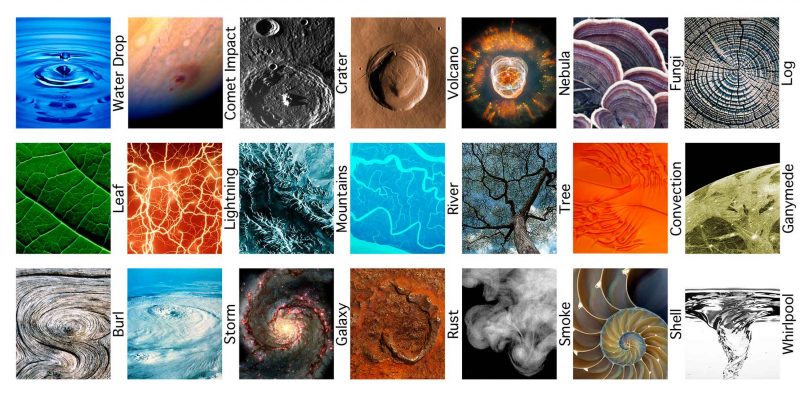
The Supermarket Science Patterns in Nature book was developed to foster scientific inquiry and support guided exploration of the visual patterns found in the world all around us: from branches of trees to cracks in the pavement. While the activities differ by grade level, the overarching theme is that, within nature, many similar patterns can be seen in objects of widely differing sizes and materials. Often, objects with similar patterns possess an underlying similarity of construction. In these activities, students are asked to analyze visual data and to come up with a scientific conclusion through logical reasoning. (Available on Amazon).

Volcanos
These activities contain all you need to create realistic soda and baking powder volcanoes, generate topological maps, and tell stories about peoples who live in the shadow of a natural disaster, linking science, art, and writing in one fun month-long activity.
Water & Soil
Even when the water looks completely clear, it may be contaminated. Soil is dirt, but what does it mean for it to be dirty? There are two classes of contaminants: chemical and biological. This book explores ways to test the water in backyard puddles, streams, as well as water coming from kitchen sinks. Students learn to distinguish between contaminants and additives and to discuss their sources. Simple tests provide hands-on experience as well as fun with water and soil.
Zoo Activities
Most young kids visit zoos during their tenures at elementary school. These activities aim to make such field trips more science-focused as well as fun. We wanted to make sure that visits to the zoo were never the same way twice! But in these days of limited access to zoos and science museums, there are other ways of teaching these same ideas — our own backyards and neighborhoods. None of us live in total isolation of concrete jungles (and even there, there is plenty to explore). Yes, animal adaptations to their natural environment might be more fun to explore by studying lemurs and elephants. But we have pigeons and raccoons and coyotes and cockroaches and mice and rats and dogs and cats and skunks and ravens and even cockatoos that escaped from their owners to form colonies living in a large city like San Francisco. We have a very wide variety of plants that thrive in our cities and suburbs and farms. We have worms and pillbugs and ants, and all of these creatures, large and small, and uniquely adapted to fill the nitch they live in. And that includes us, humans, too.
Animal Adaptations — activities with a focus on adaptations.
Animal Africa — activities with a focus on African animals.
Animal Conservation — activities with a focus on conservation and environment.
Animal Habitat — activities with a focus on understanding habitats.
Animal Primates — activities with a focus on primates.
Book of Activity Cards — A large collection of science cards for use with Supermarket Science Books.
